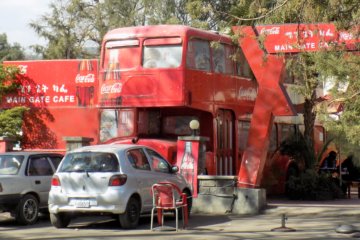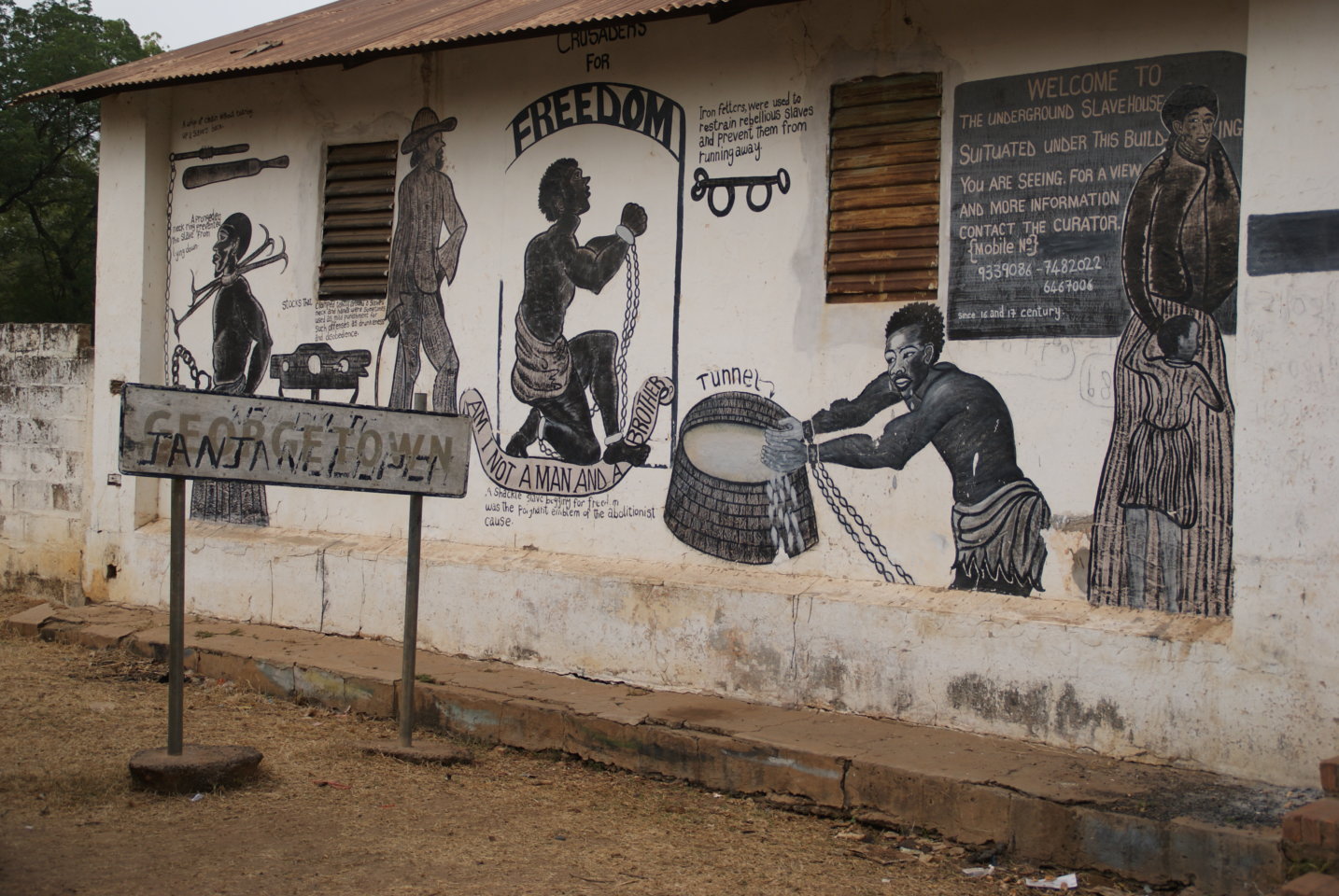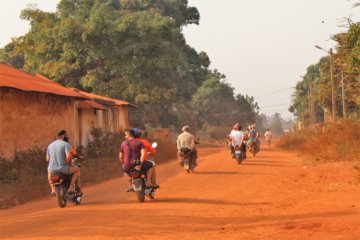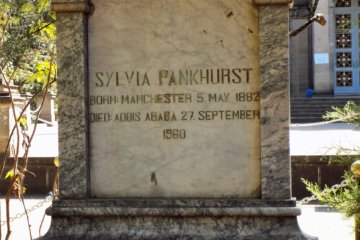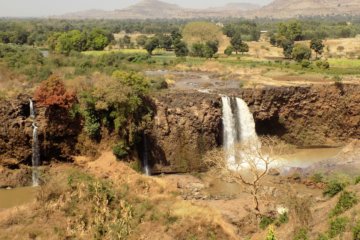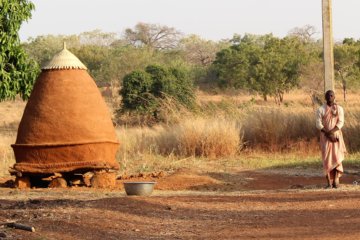| Banjul graffitti |
Banjul is unlike any other capital city I’ve visited. Even in the poorest countries, capital cities tend to stand out. A concentration of the nation’s meagre resources, combined with inward investment, usually results in something of a showcase to the rest of the world. Invariably, there are outstanding buildings – either relics from a glorious past or modern edifices built to generate optimism for a brighter future. These cities are busy, frenetic places, magnets to residents from rural areas looking for opportunities and prosperity. Not so in The Gambia. Banjul is a city in decline. The population is falling, with people and businesses being attracted to the tourist areas along the Atlantic coast. With the exception of the National Assembly, which is located outside of the city
 |
| The National Assembly |
centre and resembles a sports stadium rather than a place of government, Banjul’s buildings are dusty and crumbling. The streets are devoid of traffic and nobody seems in a rush to get anywhere.
The history of Banjul gives lots of clues to its current demise. The city was founded at the mouth of the River Gambia by the British, as a direct result of the abolition of the slave trade in 1807. Until then, the main outpost had been James Island, 15 miles inland, but Sir Charles MacCarthy, Governor-in-Chief of British West Africa, believed that the only way to enforce abolition and curb illicit trade was to blockade slaving ships at the river’s entrance. So, a settlement was established here. It was originally named Bathurst, in honour of the Earl of Bathurst, the British Colonial Secretary of the day. From the beginning, it was an unfortunate site for a settlement, standing as it does on an island separated from the mainland by a maze of mangrove-lined creeks. This gave rise to constant infestations of mosquitoes and malaria. The fact that it was low-lying meant that flooding was a regular problem in the rainy season. Despite these disadvantages, Bathurst prospered and was the obvious choice of capital when The Gambia was formally declared a British colony in 1843.
Bathurst was renamed Banjul in 1973 and the city remains the seat of government. In recent decades, however, the physical limits of its watery surrounds, in conjunction with a growing dependence on the tourist dollar, have prompted an economic drift away from Banjul to the mainland. Today, sleepy Banjul is probably the only African capital whose population is in decline, from a high of 45,000 in the early 1980s to an estimated 28,000 today.
Having said all this, Banjul is still a pleasant and interesting place to visit. There are few attractions, but it’s rewarding just to wander around the streets and get a glimpse into the everyday lives of Gambians. It’s certainly not a city geared up to the needs of tourists. The National Museum is worth a look. The exhibits are faded and dusty and you might need to find someone to unlock the door and let you in, as we did, but the information boards tell the complete story of the nation and you will leave better informed than when you arrived.
| Our taxi driver, TJ, demonstrating his drumming skills |
Albert Market is another not-to-be-missed destination. If you visit Banjul with a guide (even a local taxi driver, as we did), you will invariably be taken to the one small area of the market aimed at tourists. Here, you will be shown the usual cheap sarongs and hand carved wooden ornaments you will find in all of the tourist resorts. Insist on being shown the real market, the places where Gambians shop. Here, your senses will be assaulted and you will see (and smell!) all the local fruit, vegetables and fish which make up the local diet. You will also be able to buy household goods at Gambian prices. It was in this part of the market that I bought fabric at 50 Dalasis a yard (about 80 pence!).
| Fabric heaven! |
| Fish sellers |
From the southern bank of the River Gambia, you enter and leave Banjul by crossing the Denton Bridge and then passing Arch 22, the capital’s most striking architectural landmark. It is the tallest structure in The Gambia at 35 metres high and was unveiled on 22 July 1996 to commemorate the second anniversary of the bloodless coup which brought Yahya Jammeh to power. I’m told you can climb to the top for a good view of the city, but the 37 degree heat put us off from trying it! We’re here for another couple of weeks, so maybe we’ll still get to do it!
| Arch 22 |
Join our mailing list

Sign up to receive our monthly newsletter. Keep up with what we're doing and be the first to receive special offers and insider tips.

